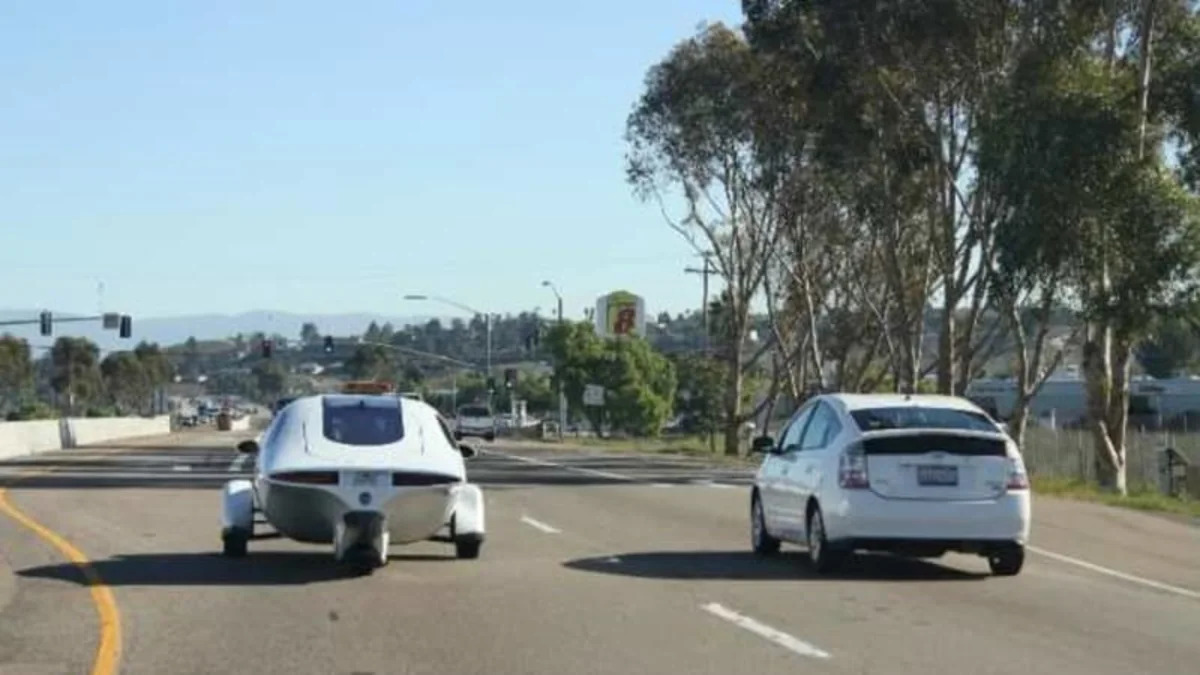Basically, Aptera is saying, we needs money, whether from the government or some other major investor. Without that, the wingless bird might forever remain out of reach. You can read more from the newsletter after the jump.A friend asked me today, "Why don't you simply use a smaller amount of money to force some vehicles out the door and into the marketplace?" My response was, "What are you willing to give up?" At a lower investment, vehicle manufacture is much more manual in nature, so the cost of every vehicle increases significantly. (This assumes, of course, that you want quality to stay the same, because testing for durability, reliability and quality has a cost.) When you can purchase components in volume, that cost gets spread out and shared. But when you build only a few, the cost of quality drives up the price.
So to those who ask what's happening in the halls of Aptera, the answer is that we are working to secure the capital necessary to deliver the volume and quality to move the market. We would obviously love to accelerate the process, but the government has to make sure they complete their comprehensive evaluation and we have to let the process run its course.
[Source: Aptera]
We Appreciate Your Support
Aptera applied to the Department of Energy's Advanced Technology Vehicle Manufacturing (ATVM) loan program in December 2008. At that time we were summarily rejected, not because the DOE didn't see value in our innovation, but because the prevailing law that defined passenger vehicles had not been altered for nearly a half century. The great news, and one of the things that makes us proud to be Americans, is that our leaders ultimately recognized that innovation can come in all shapes and sizes. So in 2009, they opened the definition to allow those of us, who take a slightly different approach to the market, to compete. And with that wind at our back, we reapplied.
Since that time, the team has continued to advance the development and design of the 2-series vehicles. The goal is to make a vehicle that is great, so we test and repeat, then test and repeat some more to confirm our results.
Over the past months, our engineering team has taken a vehicle that was challenged by error states during the X PRIZE and transformed it into a vehicle that is as robust and predictable to drive as it is attractive. Aptera's engineers won't be done making enhancements on the 2-series until we ship the first model of its successor. It is this mentality that breeds quality for Aptera.
So what is our challenge? Well, the primary hurdle is raising sufficient capital to compete in the modern automotive market. This is reality whether your name is Fisker, Tesla, Ford or Nissan. The best supporting evidence is that each of these companies, like Aptera, has applied for funds from the ATVM Loan program. Both industry and government alike have realized that capital is needed to sponsor the kind of innovation that will lead this country forward.
A friend asked me today, "Why don't you simply use a smaller amount of money to force some vehicles out the door and into the marketplace?" My response was, "What are you willing to give up?" At a lower investment, vehicle manufacture is much more manual in nature, so the cost of every vehicle increases significantly. (This assumes, of course, that you want quality to stay the same, because testing for durability, reliability and quality has a cost.) When you can purchase components in volume, that cost gets spread out and shared. But when you build only a few, the cost of quality drives up the price.
So to those who ask what's happening in the halls of Aptera, the answer is that we are working to secure the capital necessary to deliver the volume and quality to move the market. We would obviously love to accelerate the process, but the government has to make sure they complete their comprehensive evaluation and we have to let the process run its course.


Sign in to post
Please sign in to leave a comment.
Continue